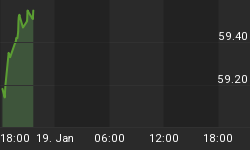"How low can they go?" This is the question some investors are beginning to ask themselves as they view the long-term interest rate picture as long-bond yields are downward trending. Conversely, Fed watchers are asking the question "How high can they go" in reference to the Fed Funds rate, which keeps rising.
 Greenspan and Co. continue to raise the Fed Funds rate even though the shorter-dated Treasuries are telling them to stop. There is a threat the Fed will continue raising rates after those continuous increases, the most recent one being on May 3. The Fed Funds rate is currently 3.0%.
Greenspan and Co. continue to raise the Fed Funds rate even though the shorter-dated Treasuries are telling them to stop. There is a threat the Fed will continue raising rates after those continuous increases, the most recent one being on May 3. The Fed Funds rate is currently 3.0%.
My work on the 10-year Treasury Yield Index (TNX) tells me something interesting. Currently 41.25, TNX has found temporary support above 40 and could have a minor technical rally over the next few days. But it won't be long before TNX encounters a strong downward wave of resistance that will probably take the index lower over the next couple of months to as low as the 36.0-to-38.00 area before strong support is encountered. This area was last visited in March of 2004.

According to a recent CNN article on the subject of interest rates, "bond investors still seem more concerned about a possible economic slowdown than a pickup in inflation. Even though the fed funds rate has risen from 1 percent to 3 percent since June, longer-term rates haven't moved higher, a phenomenon Fed chair Alan Greenspan called a 'conundrum' in February." That's a good way of framing the current problem of the rising Fed Funds rate compared with the falling 10-year Treasury yield.
My colleague Chip Hanlon of Delta Global Advisors (www.deltaga.com) was quoted in the CNN article as saying he doesn't see this changing anytime soon. "The risk is that long-rates could fall even further. The conundrum continues," he said. Well put, Chip.
Another colleague has pointed out that a rise to 3.0% in the Fed Funds rate is bad enough, but a further series increases could badly damage the market. He points out that Morgan Stanley's investment management arm predicts 4.25%. "If that happens," writes Bert Dohmen of Dohmen Capital (www.dohmencapital.com) look for an eventual stock market crash, similar to 1974."
Dohmen further points out that Greenspan's favorite inflation indicator, the percentage consumer expenditures (PCE) deflator, a favorite of Chairman Greenspan, was up only 1.6% on a 12-month basis. He asks, "Is that a reason to risk a relapse into recession by hiking interest rates? I don't think so."
Dohmen further points out that if the Fed Funds rate goes to 4.25%, it would mean that the cost of short-term money has more than quadrupled. "Those costs must be recouped if possible," says Dohmen, "and that is by charging higher prices. Therefore, the Fed's actions may actually be boosting inflationary pressures, if companies are able to pass these costs on to the consumer. Incredibly, the Fed chairman always talks about 'imbalances' in the economy. But the greatest imbalance is created by the Fed." Another good point.
Another astute Fed watcher, Don Hays, observes that the current divergence between the 90-day T-bill and the Fed Funds rate should be sending a message to the Fed that "enough is enough" and that it's time to stop raising rates. The only question that remains is if Greenspan and Co. will heed the market's message.















